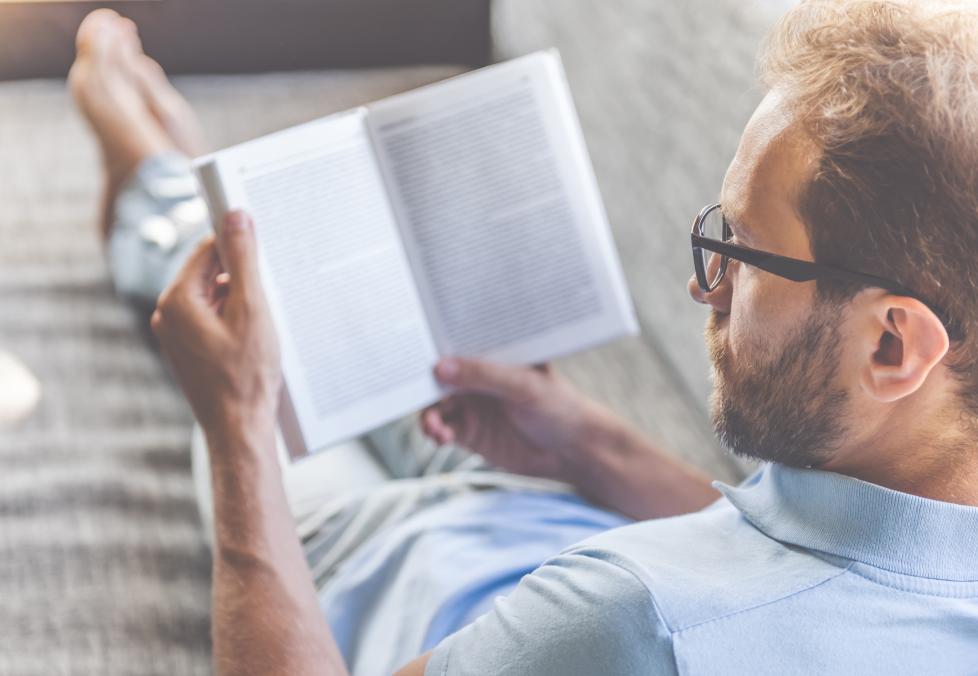
Two pairs and a free, quality eye exam for just $79.95
Everything you need to know to take care of your eyes — for life.
Welcome to the world of presbyopia. Here’s help finding your way into the clear again.

Focusing on a page or computer screen beginning to vex you? Going on blind faith that the pharmacist handed you the right prescription?
You always knew this day was coming—the day you’d need readers.
Readers are a sure sign of presbyopia, one of the, um, “joys” of aging, says Memphis-based optometrist Mollie Veteto, O.D., who is with Nashville Regional Eye Care inside America’s Best Contacts & Eyeglasses. In fact, the word presbyopia literally means “old eye” in Greek.
Harsh, but true. As you rack up more birthdays, your eyes’ lenses gradually lose their elasticity. It’s a completely normal change, but it’s a big deal since a flexible lens helps your eye focus.
Presbyopia typically starts to sneak up on people in their early to mid-40s, according to data from the American Optometric Association. But it can be hard to know for sure if you really can’t see as well—or if your eyes just need a rest.
When any of the following symptoms become more than just mildly irritating, it’s a safe bet that reading glasses are in your future.
Or at lunch you start telescoping the menu—repeatedly pulling and pushing it closer and farther—to try to find the sweet spot where you can see the daily specials.
People who wear prescription glasses for nearsightedness might find they see better up close when they take off their glasses, says Dr. Veteto. And contact lens wearers might think their lenses got smudged or are defective.
Either way, difficulty seeing or focusing on close-up objects is the chief complaint of those with presbyopia.

Two pairs and a free, quality eye exam for just $79.95
The adage “the devil is in the details” takes on new meaning for people in their mid-40s and 50s.
“When you need to concentrate on a task that involves close-up work, but your eyes just aren’t cooperating or focusing right, the resulting eye strain and fatigue can bring on headaches,” says Dr. Veteto.
You might even notice that your eyes hurt after a long stretch of struggling to focus.
Along with the odd arm adjustments to make it easier to read, many people in the early stages of presbyopia come to find that everyday lighting just isn’t cutting it.
“People will adjust their reading position so that they can look at a book directly under the lamp,” Dr. Veteto says. “Or if they’re making dinner, they’ll want every available light in the kitchen turned on.”
“I don’t need glasses. It’s just that this menu has really tiny print, don’t you think?”
Sound familiar? Sure, the menu may have tiny print, but it’s more likely you could benefit from a little vision boost.
If you’re guilty of any of the above and are ready to take corrective measures, Dr. Veteto recommends scheduling an eye exam.
Your eye doctor can recommend the power of reading glasses that is best for you. But more important, they’ll be able to rule out any other vision problems that might be hampering your focus, and check for eye health issues that could be related to your general health.
No other vision complaints? You may be able to pick up a pair of OTC readers.
If you have a comprehensive eye exam and have no other problems besides presbyopia, ask your optometrist which power you need.
Most nonprescription reading glasses range in power from +1.00 to +3.00 diopter (the optical power of lenses) and come in two styles: full frame (the entire lens is magnified) and half-moon (half-lenses that sit low on the nose).
There are advantages to both. Full frame readers are good if you’re only going to use them for reading. Half-moons are nice for multitaskers who frequently toggle between near and distance viewing.
Tip: If you’re not happy with the quality of the frames or the selection at the drugstore kiosks, the staff at America’s Best can put low-power, prescription-quality reading lenses into many of the frames we offer.
More complicated vision problems? Assess your options.
Basic reading glasses won’t necessarily be the best solution for every patient with presbyopia.
“If no other vision issues are found during an eye exam, OTC glasses are fine, and the doctor will say so,” Dr. Veteto says. “Other patients may need prescription lenses if they already wear eyeglasses or contact lenses, or based on individual needs. For example, if I have a patient who is a teacher and is constantly switching between near and far vision tasks, I’ll want to put them in a prescription lens.”
Options include:
There are also some “pretty cool advances in contact lenses” to treat presbyopia, says Dr. Veteto. These include multifocal (distance and close-up correction in one lens), monovision (one lens corrects near vision, the other distance), and modified monovision lenses (one lens is bifocal, the other treats distance).
Remember, “It’s always best to have the eye exam, because we are checking so much more than just your prescription,” Dr. Veteto says. “We are assessing your overall eye health, which tells us about your overall health as well.”